Data Brief 2020-027 | November 6, 2020 | Written and compiled by Leila Gonzales and Christopher Keane, AGI
Download Data Brief
COVID-19 Impacts to Geoscience Businesses (Summer – Fall 2020)
Throughout the summer, over half of geoscience employers reported
expectations of lower financial performance relative to 2019. In
September, this percentage improved to 50% and preliminary data from
October indicates continued improvement in financial performance with
only 45% of companies expecting lower performance relative to 2019. Over
the same period, the percentage of companies reporting either similar or
better financial performance relative to 2019 steadily increased from
42% in June to 55% in October.
Since June, approximately 30% of companies reported increased workloads
relative to staffing, and preliminary data from October indicates this
percentage has increased to 45%. Meanwhile, the percentage of companies
reporting decreased workloads relative to staffing has remained
relatively steady since July despite the uptick in productivity in
October.

DB_2020-027 chart 01: Expectations for financial performance: current calendar year relative to last year (Credit: AGI; data from AGI's Geoscience COVID-19 Survey)
AGI
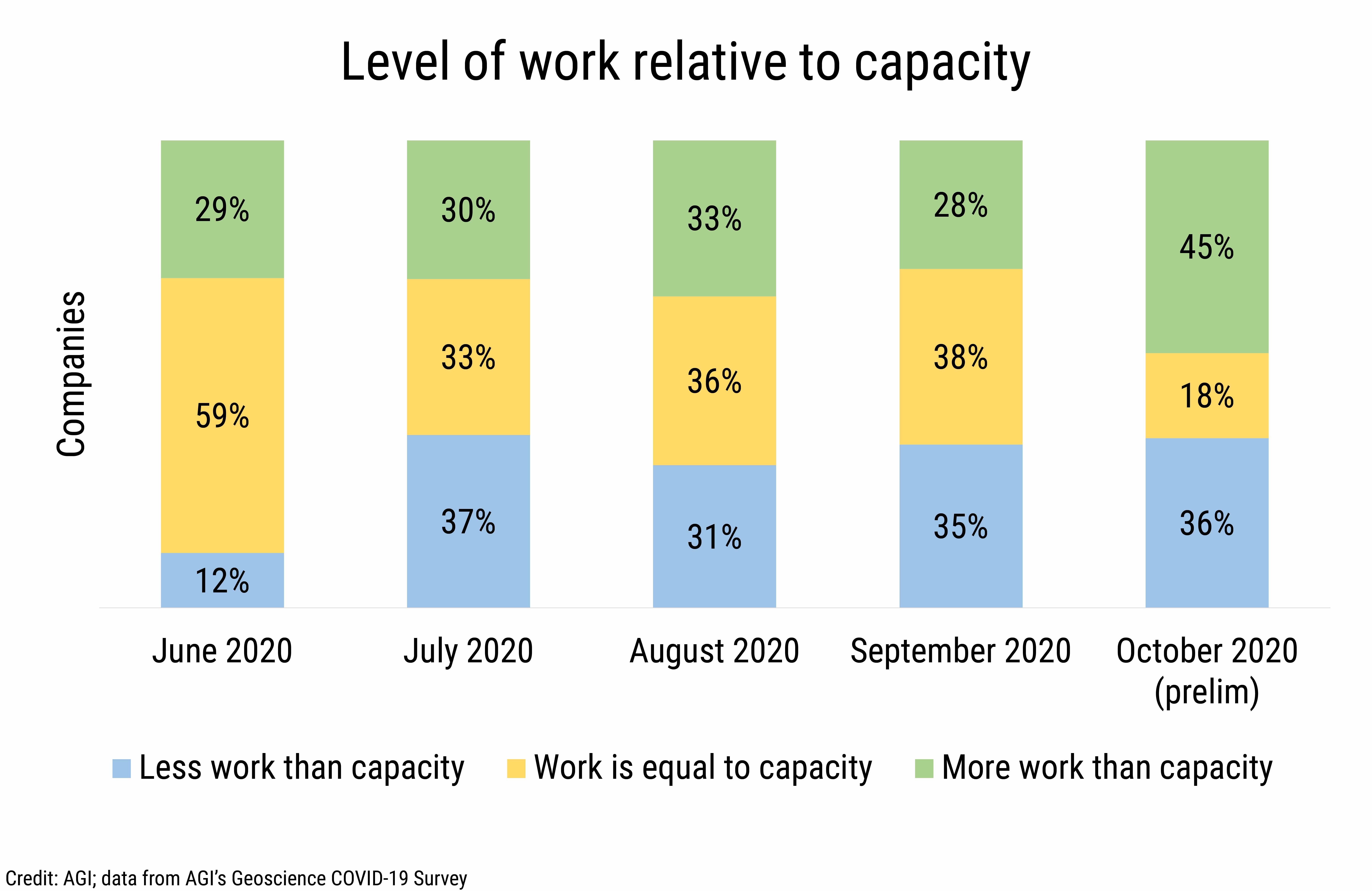
DB_2020-027 chart 02: Level of work relative to capacity (Credit: AGI; data from AGI's Geoscience COVID-19 Survey)
AGI
Over the summer, just over one-third of companies reported receiving
financial assistance, and this percentage dropped to 19% in September.
Of those companies specifying the types of financial assistance
received, the vast majority reported receiving federal aid such as from
the Paycheck Protection Program (PPP), Economic Injury Disaster Loan
program (EIDL) or SBA Loan Forgiveness program. With the end of the PPP
in August, we see a concurrent drop in the percentage of businesses
receiving financial aid.
Due to the end of the PPP and the decline in companies reporting
financial assistance in September, in October’s round of surveying, we
did not ask employers if they received financial assistance in the past
month, but instead asked if the end of the PPP resulted in a change to
business operational strategies. Preliminary data indicates that
although federal aid was useful, the end of PPP did not change business
operational strategies. This also aligns with the improvements in
financial performance and productivity discussed earlier in this data
brief.
Strategies used by geoscience employers for dealing with COVID-19
impacts have predominantly focused on investment in remote work
technologies followed by implementation of health and safety protocols
for those working in facilities, offices, and at field sites. Some
companies noted increased communication, cooperation and cohesiveness as
a result of the switch to online technologies, and others noted more
frequent and focused internal and external communication with colleagues
and clients. In addition, some companies noted that they may be
considering a shift towards more permanent telework with limited
in-office attendance even after the end of the COVID-19 pandemic.
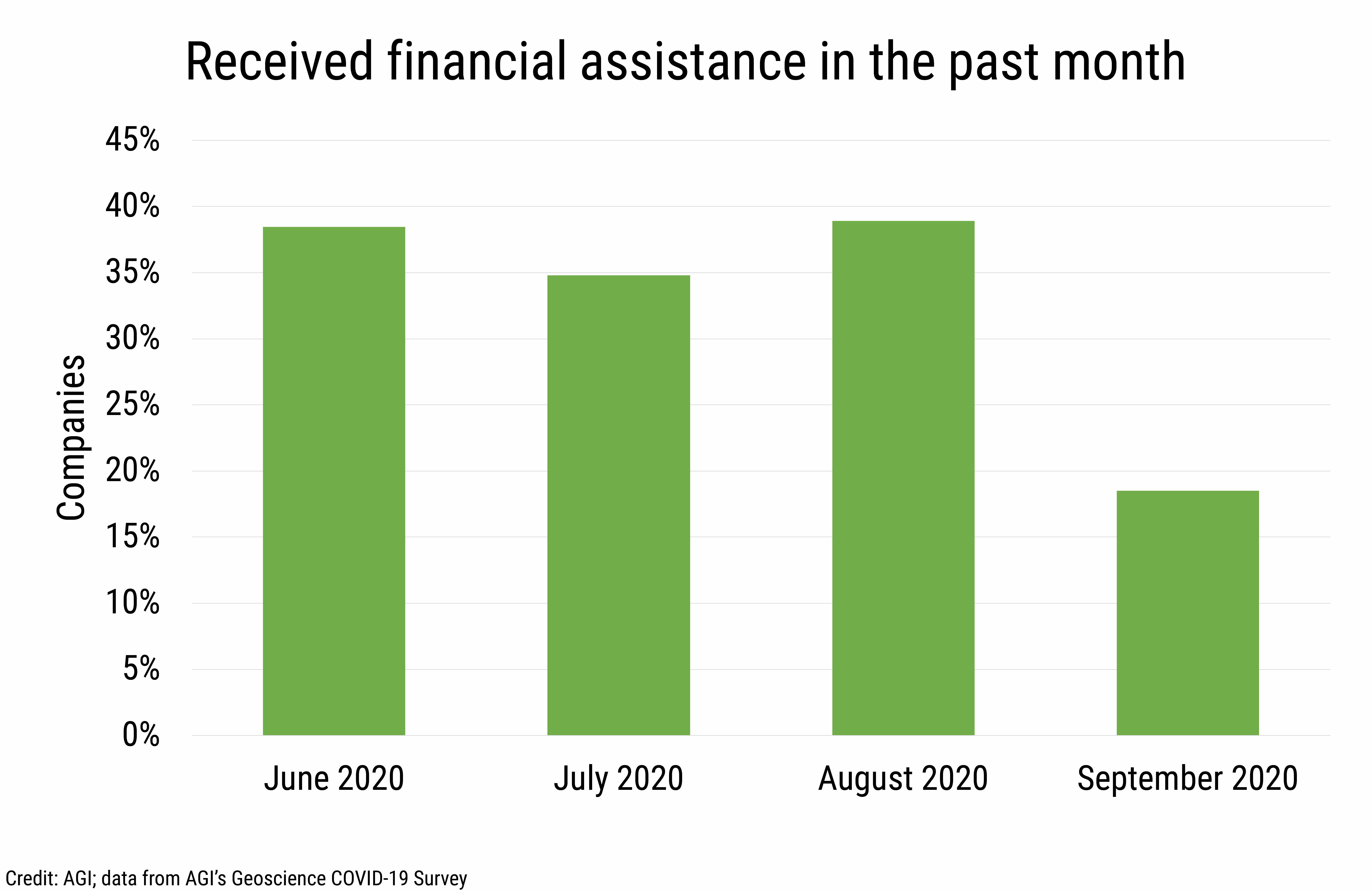
DB_2020-027 chart 03: Received financial assistance in the past month (Credit: AGI; data from AGI's Geoscience COVID-19 Survey)
AGI
Most of the health and safety protocols implemented by companies
includes standard COVID-19 protocols for social distancing, disinfection
of surfaces and shared equipment, mask wearing, reduced staffing and/or
cohorts, etc., in addition to guidelines on vehicle usage. Some
companies noted that they are taking the time to increase marketing and
networking activities, including re-establishing connections with
former clients and prospecting for new work with existing clients, and
others have noted that they are taking advantage of contracting
opportunities that would otherwise be taken by seasonal staff.
Additionally, maintaining budgetary discipline is another strategy
mentioned by some companies.
Staffing
While most companies expect no change in permanent staffing this year,
the percentage of companies reporting expected decreases in permanent
staffing has fluctuated between 16% and 32% since June. Similarly, while
most companies reported no expected changes in temporary or contract
staffing, the percentage of companies expecting decreases in temporary
and contract staffing declined from 35% in June to 18% in October.
In June, half of businesses reported that they had employees that were
either on travel or working in the field and this increased to 56% in
September, there after dropping to 45% in October. Preliminary data from
October also indicates an increase in the percentage of businesses
reporting that employees were not travelling or conducting field work
due to either institutional / departmental policies or due to their own
personal decisions – the latter an increasing trend since August.
Workplace policies available to employees have shifted as companies have
adjusted to long-term remote work situations and since June over 90% of
companies provided limited and/or permanent telework situations for
their employees. The percentage of companies providing employees with
the ability for limited work in the office has continued to increase,
from 33% in June to 73% in October while the percentage of companies
that have provided employees with the ability for permanent in-office
work declined from 33% in August to 18% in October. The percentage of
companies providing employees with access to lab facilities, fieldwork
and site visits have continued to increase since June.
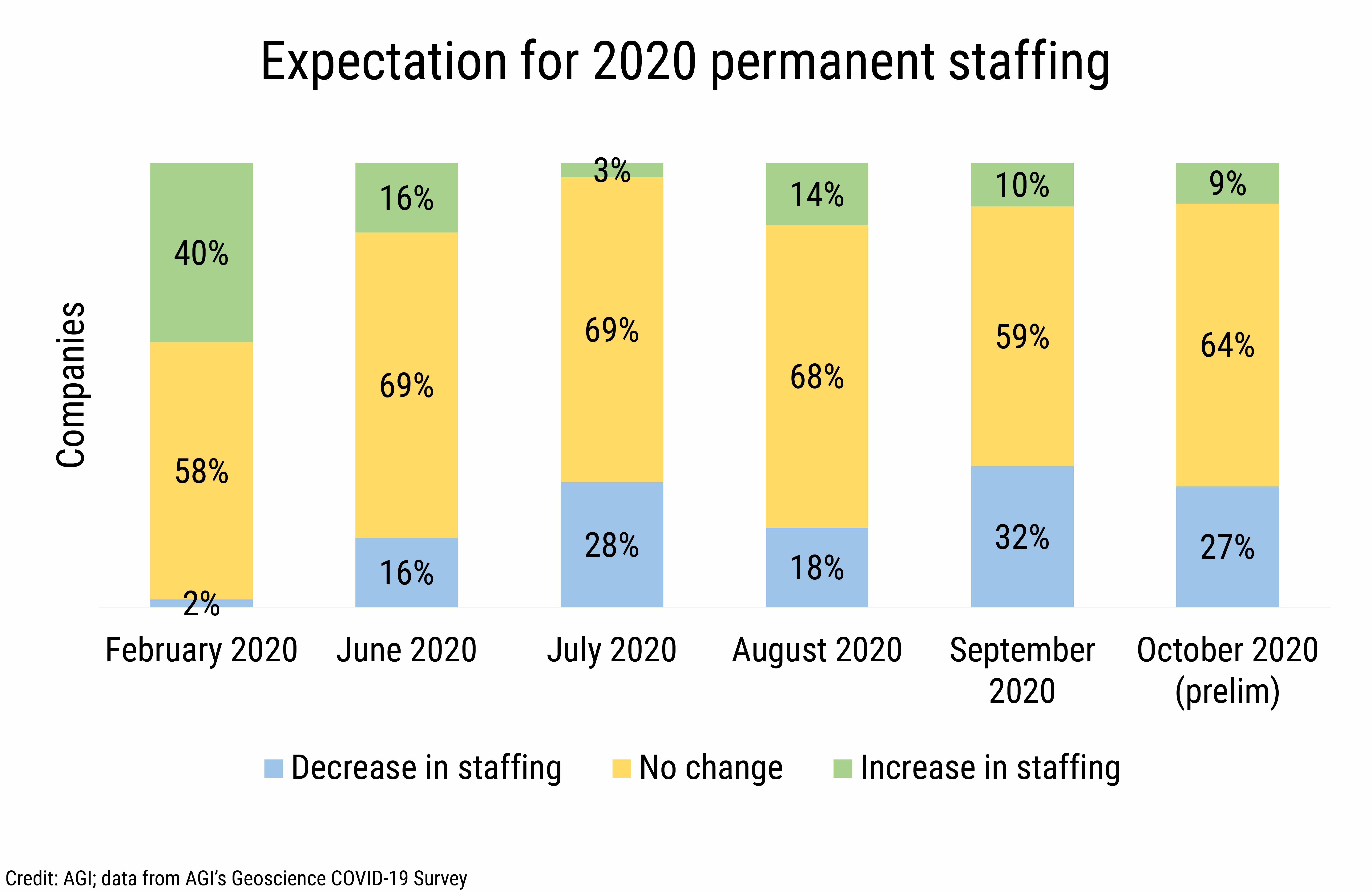
DB_2020-027 chart 04: Expectation for 2020 permanent staffing (Credit: AGI; data from AGI's Geoscience COVID-19 Survey)
AGI
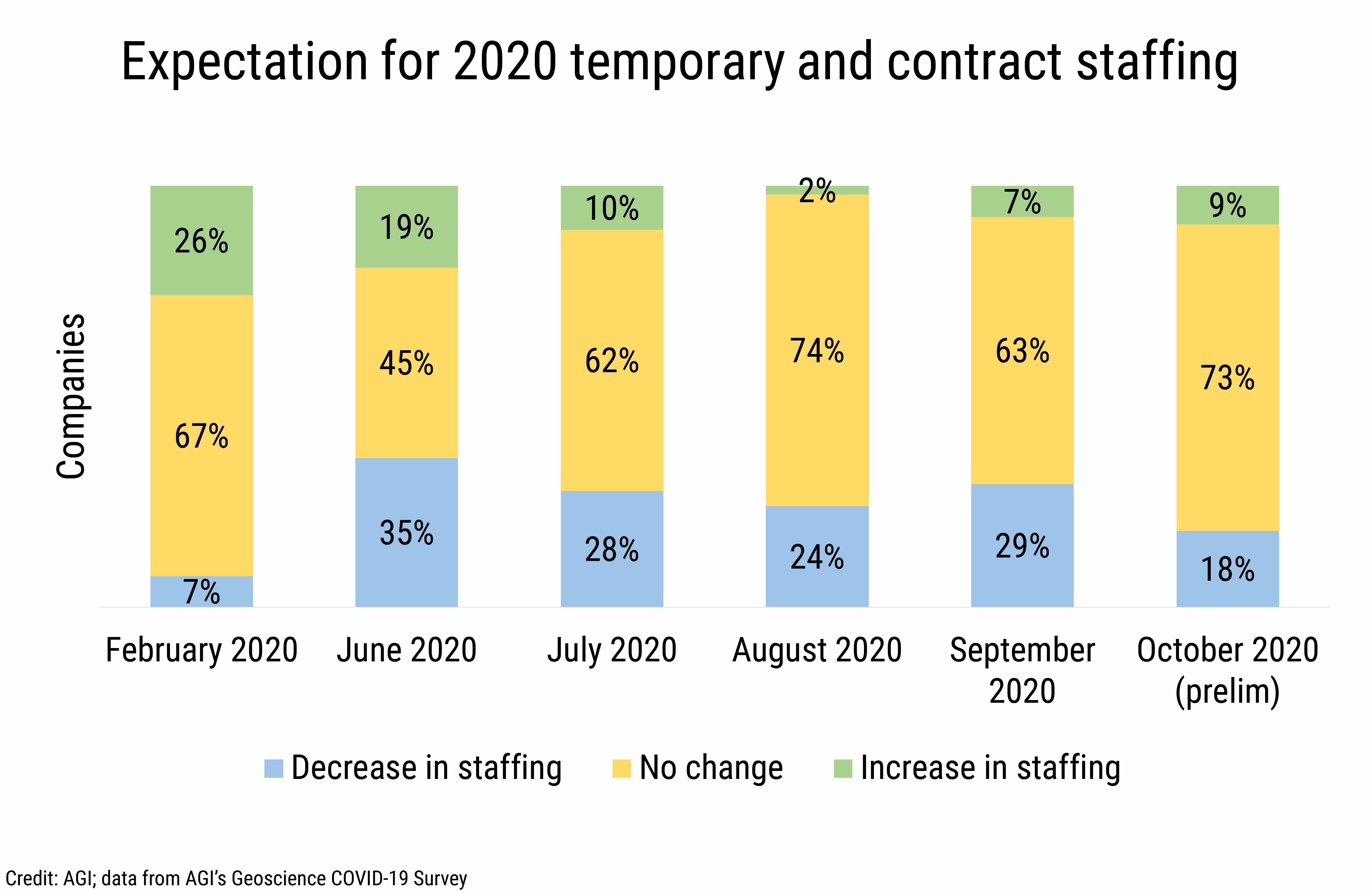
DB_2020-027 chart 05: Expectation for 2020 temporary and contract staffing (Credit: AGI; data from AGI's Geoscience COVID-19 Survey)
AGI
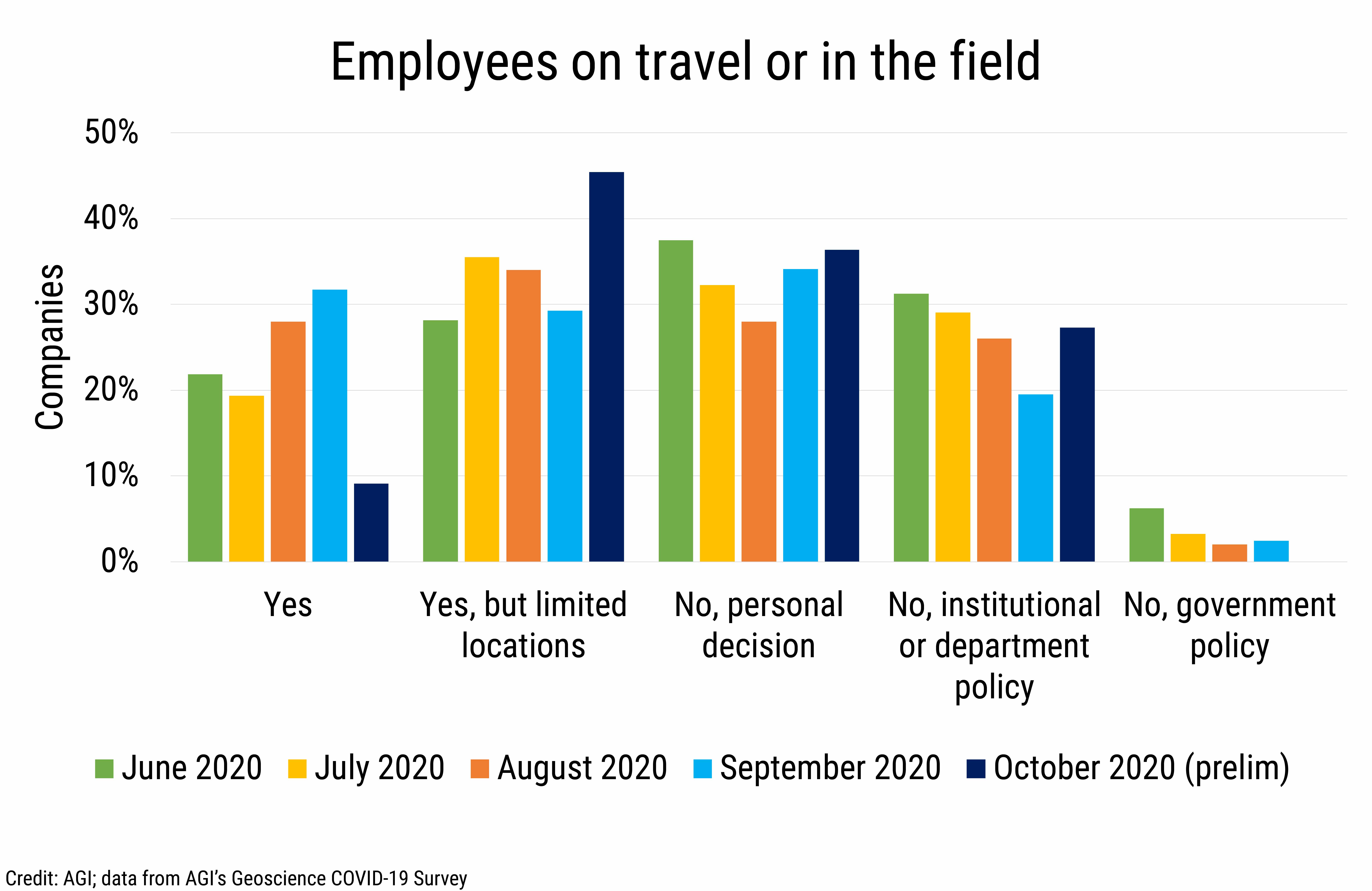
DB_2020-027 chart 06: Employees on travel or in the field (Credit: AGI; data from AGI's Geoscience COVID-19 Survey)
AGI
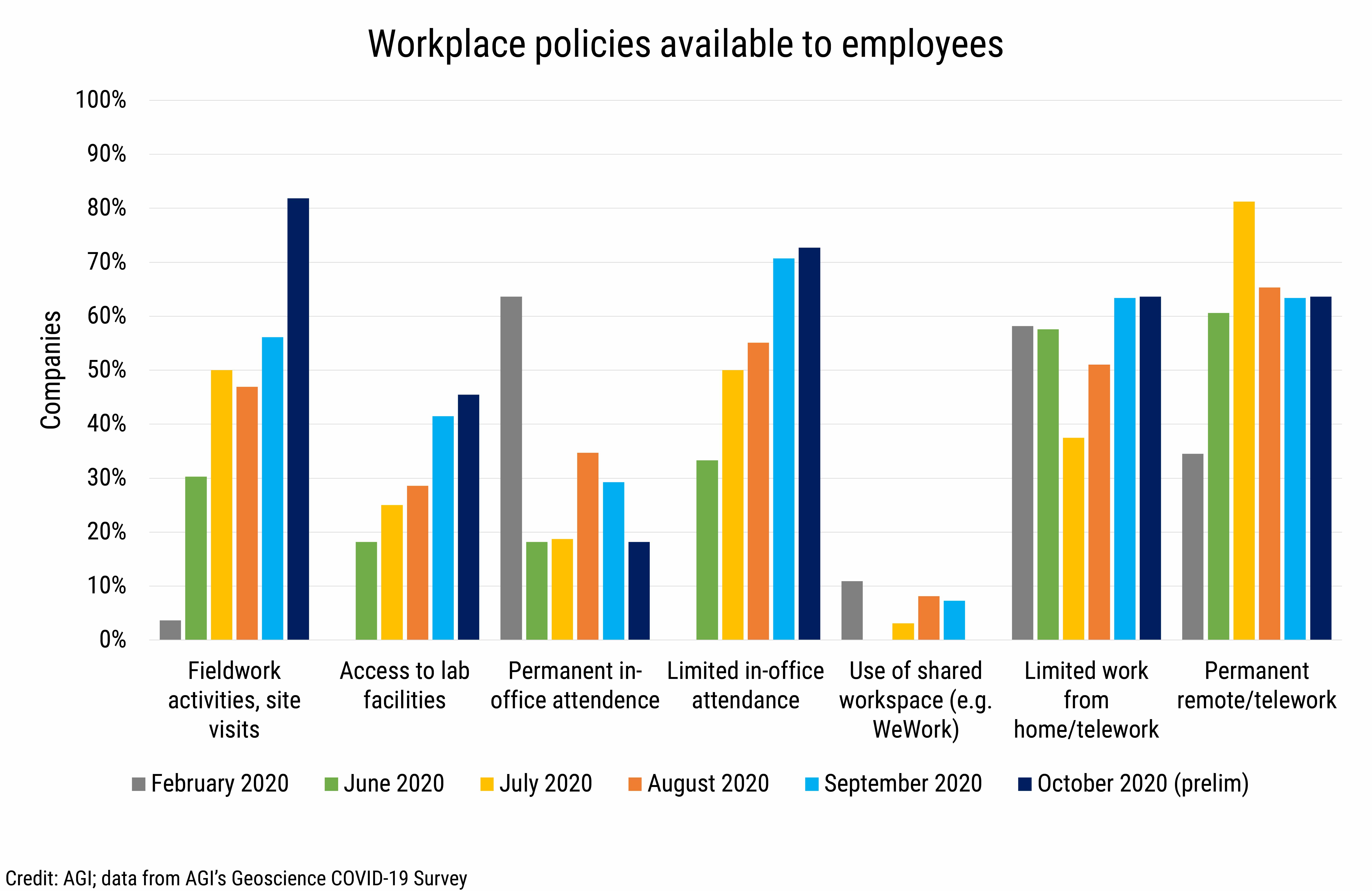
DB_2020-027 chart 07: Workplace policies available to employees (Credit: AGI; data from AGI's Geoscience COVID-19 Survey)
AGI
Hiring Trends
Starting in September, we began asking employers questions regarding
job openings and hiring trends. While most employers are not hiring,
there has been an increase in the percentage of companies reporting job
openings since September (27% to 36% in October) in addition to those
hiring geoscience employees
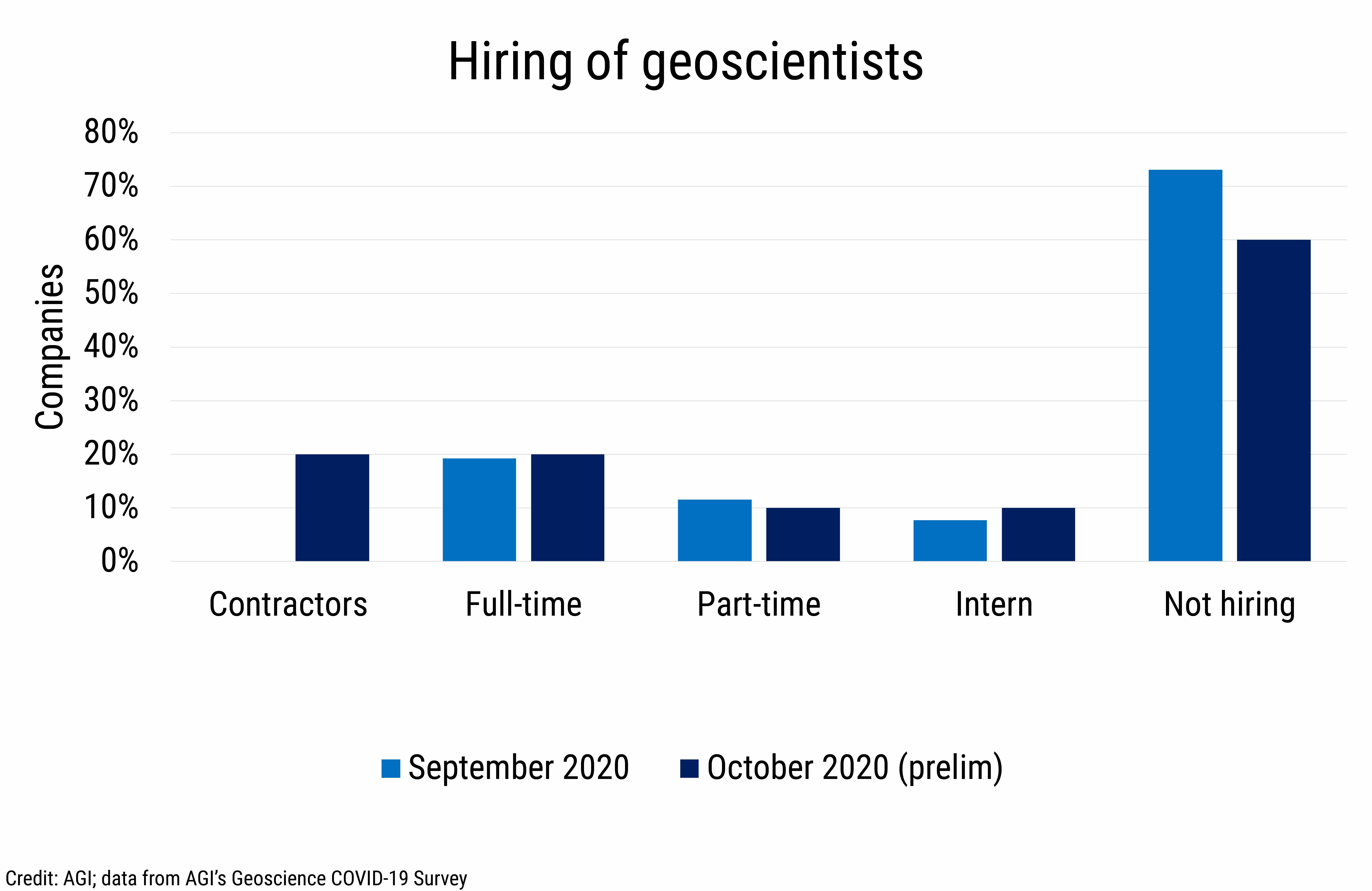
DB_2020-027 chart 08: Hiring of geoscientists (Credit: AGI; data from AGI's Geoscience COVID-19 Survey)
AGI
In addition to asking about hiring trends, we also inquired about
challenges employers are facing in terms of hiring and recruiting new
talent as well as about how the pandemic may have changed what employers
are looking for in potential candidates. Some employers reported that
budgetary restrictions such as hiring freezes and limited resources
affected their ability to hire new talent, while others indicated that
there were a lack of qualified candidates for available positions and a
decreased ability to network to find new talent. Other employers
indicated having to pass up candidates who only wanted work-at-home
arrangements and would not consider positions that required onsite work
either in the office or lab. Other challenges included issues with
online interviewing not being as effective as face-to-face interviews,
and challenges with the new hire onboarding process in regards to
integration with the company’s culture and core values.
Skills and training that employers have stated they are looking for in
new hires include the ability and motivation to learn and adapt to new
projects and tasks, technical proficiency and experience applicable to
specific projects, ability to work independently and in project teams,
and the ability to fit into the company’s organizational culture. In
addition, several employers indicated that although they typically hire
master’s and bachelor’s level graduates, they also hire doctorates.
Most employers indicated that the pandemic has not changed what they are
looking for in employees; however, some employers indicated that the
pandemic has made them look more closely at candidates that can
demonstrate that they can work independently without supervision. Other
employers indicated that they have become more selective in their hiring
as a result of the pandemic.
We will continue to provide current snapshots on the impacts of COVID-19
on the geoscience enterprise throughout the year. For more information,
and to participate in the study, please visit:
www.americangeosciences.org/workforce/covid19
Funding for this project is provided by the National Science Foundation
(Award #2029570). The results and interpretation of the survey are the
views of the American Geosciences Institute and not those of the
National Science Foundation.